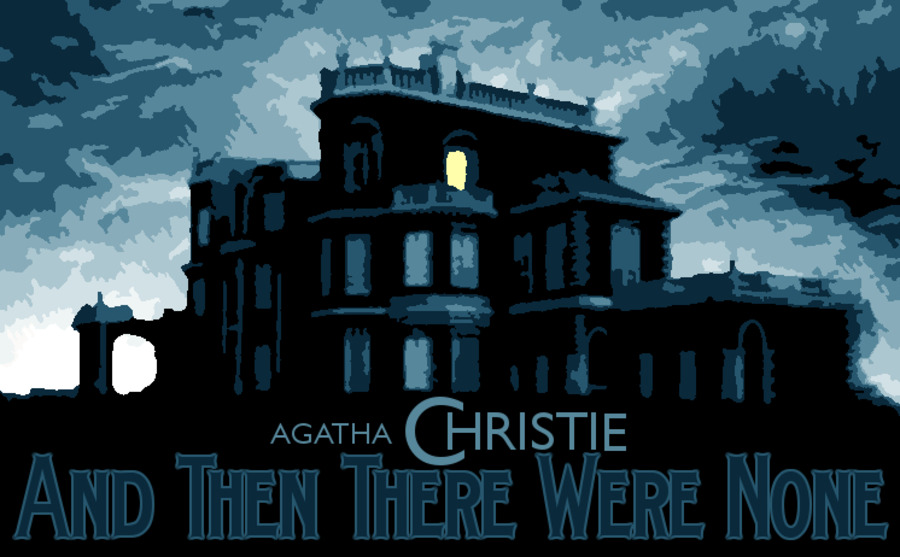**Note: Be aware that this article will be full of spoilers so if you have somehow avoided reading one of the most widely popular mystery novels of all time and avoided seeing at least one of its more than a dozen adaptations, you may want to just skip down to the conclusion to find out where to start.
For those who aren’t aware, And Then They Were None (Ten Little N***ers as originally published) is the story of a group of people brought to an incredibly isolated island with no way of escape for disparate reasons by a Mr. U.N. Owen. Upon arrival they are then greeted with a recording that accuses each of them with murder, sentencing them to be judged. Then each one is killed off in a fashion related to the poem Ten Little Indians/N-words/Soldier Boys. The original novel had a very grim ending that essentially leaves everyone dead with the judge, succumbing to a terminal illness, having killed everyone else before poisoning himself. When Agatha Christie adapted the novel as a stage play, she made the decision to give it a happy ending, sparing the romantic lead man and woman. This latter ending is the one that most adaptations seem to use with a couple of notable exceptions I’ll get into.
Probably the most well-known version of the book is the 1945 film And Then There Were None directed by Rene Clair and it sets a template for how many of the versions will be adapted over the years. It tackles the material with a lighter touch adding elements of comedy and using the stage play’s happy ending for what I assume to be a more crowd-pleasing Golden Hollywood feel. While what follows is eight different adaptations, this by no means is intended to include every single adaptation of the film. In addition to these, there are numerous other television versions, additional Indian versions, a fairly recent Japanese mini-series version as well as looser adaptations like the Arnold Schwarzenegger vehicle Sabotage and several others produced from various countries over the years.
When I first thought about doing this marathon, I was worried that watching eight versions of the same story would get boring and repetitive, but quite the opposite turned out to be true. It was actively fun to watch for the small variances and major deviations from the original novel and from each of the versions. Interestingly none of them felt terribly similar to any other version which was a feat in and of itself. Without further ado, let’s dig into it, shall we?
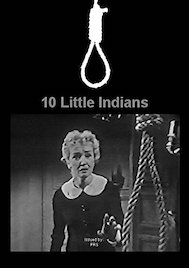
Ten Little Indians (Paul Bogart & Philip F. Falcone, 1959)
How Faithful Is It?
Pretty faithful generally. One of the few adaptations to actually use the island mansion location from the book, like the 1945 film (which this almost serves as a Cliff Notes version of at just an hour long) it uses the stage play “happy” ending.
How Good Is It?
Well, being a live TV broadcast from the ’50s, it has obvious staging limitations, and given the runtime, it breezes through much of the plot making it feel overly rushed in places. Despite that, it’s a decent version for what it is but not recommended as the entry point into the story.
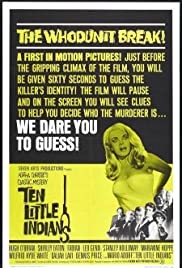
Ten Little Indians (George Pollock, 1965)
How Faithful Is It?
Not very… This one moves the action to a remote alpine luxury mansion atop a precipitous mountain. It also uses the “happy” ending but changes the method of murder for several of the guests (although the order of the murders is still generally preserved).
How Good Is It?
Eh… It’s ok. This swinging sixties version has the likes of Shirley Eaton (the dazzling Bond girl from Goldfinger) and singer Fabian and is generally competent although rather flatly directed and still too light for the subject matter at hand in places. Plus die hard fans of the book will be annoyed at the liberties taken with the plot and setting.
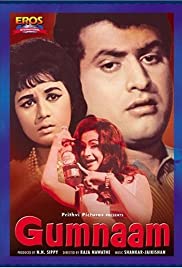
Gumnaam (Raja Nawathe, 1965)
How Faithful Is It?
Um, not really much at all. But it’s a Bollywood musical comedy, so is that so surprising? The same basic premise of people trapped and killed off one by one for past crimes is still there. But a LOT was changed. Some of the actual characters are completely different, like replacing the dowdy older lady with a movie actress for instance (which is actually something multiple versions of the story do). In this one the butler doesn’t have a wife either and is clearly positioned more as one of the main characters in addition to the younger couple that’s typically at the center of most versions of the story. The location is changed to where it now takes place in the middle of the jungle after an emergency landing of a plane everyone was on. The past crimes are dolled out in a very different manner as notes found on the bodies of the dead rather than recited as a recording at the beginning. Perhaps most drastically the third act is radically different with a very different roster of who survives.
How Good Is It?
Well, hm. I mean, it’s a ‘60s Bollywood musical comedy/thriller, so you kind of know what to expect here. Multiple song and dance numbers disrupt the narrative (including a really weird dream sequence kicked off by the butler staring directly at the camera uncomfortably for far too long). I mentioned earlier the butler was given a more central role. This is probably because popular comedian/actor Mehmood was cast as him and they wanted to bring his shenanigans front and center. But damn, he is beyond irritating with his bowl cut and Hitler moustache mugging for the camera at every turn. I will say that opening song was a pretty dope slice of ‘60s Indian funk pop that I could groove to outside the film. If you can handle all the Bollywood cheese and the 2.5 hour runtime and aren’t a slavish devotee of the source novel, you might find this entertaining. Otherwise stay far away.
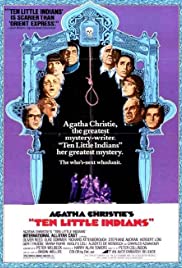
Ten Little Indians (Peter Collinson, 1974)
How Faithful Is It?
Not as radically different as Gumnaam but still takes multiple liberties with the source. We still have the actress instead of the older religious lady. The location is now transplanted to a palace in the desert for some reason. It generally follows the same beats as the novel with the stage play’s ending.
How Good Is It?
Eh… This version just felt sort of listless. Like several adaptations of Christie in the ‘70s, it loads the cast with some big names like Sir Richard Attenborough, Charles Aznavour, Stephane Audran, Herbert Lom and Orson Welles (as the booming voice on the recording) among others. But everyone seems a little bored and the directing is just flat and uninspired. It also tips its hand too early making the mystery more obvious than many of the versions. Overall, this is one of the weaker adaptations out there.
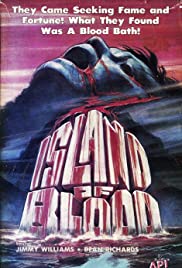
Island of Blood (William T. Naud, 1982)
a.k.a. Whodunnit
How Faithful Is It?
Somehow even less faithful than the Bollywood one. Casting the premise as a straight-up ‘80s slasher film, it actually retains the island locale unlike many versions but changes almost everything else. Instead of the Ten Little Indians poem presaging the deaths, we have an obnoxious punk song that we hear over and over describing how each character will be killed. The actual characters themselves are mostly different, most of them being people in the movie industry with the premise they’re all gathered on the island to make a movie.
How Good Is It?
As a legitimate film, it’s pretty bad. It does have a twist at the end that gives it a little bit of oomph but otherwise is a pretty middling slasher directed and written pretty poorly. Which is a shame really. The actual premise of And Then There Were None is pretty much the template for the ideal slasher. You could basically take the plot as-is and just amp up the ridiculousness of the deaths themselves and just let it ride. It’d probably be fine. I will say, the deaths are suitably over-the-top for die-hard slasher fans if you get your jollies out of that alone. Otherwise, this is a pretty dirt-poor movie.
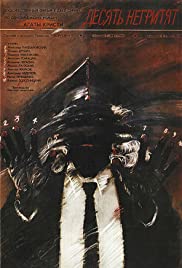
Desyat negrityat (Stanislav Govorukhin, 1987)
a.k.a. Ten Little Indians
How Faithful Is It?
Until the 2015 version discussed in a little bit, this was by far the most faithful version of the film following the original novel pretty much beat-by-beat and preserving the original incredibly grim ending (I think the first adaptation to do so).
How Good Is It?
Very good actually. One of the best adaptations of the book with a serious, gloomy atmosphere befitting a group of amoral fiends trapped on an island together being killed off one by one. It has always bothered me a little how most versions of this story turn it more into a macabre comedy at times which really takes me out of the story in how much characters underreact to the constant murders. Not this one though. While the acting feels a little stiff at times, the directing is on point making for a top notch version of the film.

Ten Little Indians (Alan Birkinshaw, 1989)
a.k.a. Murder On Safari
How Faithful Is It?
One step forward. Two steps back…. Here’s another version of the story that has moved the setting. This time the group is supplanted and stranded in the African savanna in the middle of nowhere, having their only route cut off by some natives who destroyed the lift over a large ravine. This one seems to have a hybrid of the actress/religious woman role but also makes her a lesbian. As far as the ending, it is probably the most faithful to the stage adaptation of any of them, with more of a drawn out climax that almost seems to adapt the original novel’s ending but switches it up at the last minute.
How Good Is It?
Well, it isn’t one of the best versions, but it also is somewhat better than the ‘65 and ‘74 versions. The casting is decent with Donald Pleasance as the judge in the most front-and-center role (and who really chews some scenery in the finale). Interestingly this one casts Herbert Lom again, having previously shown up in the 1974 version albeit in a different role (here as the general and previously as the doctor). It doesn’t really take advantage of the African location much except for a couple of scenes which is a shame. I think more could’ve been done with the setting honestly. Overall, the directing looks on the cheap side giving it a kind of TV movie feel at times (which is a problem I had with the ‘74 version as well) but it’s a decent version of the story.
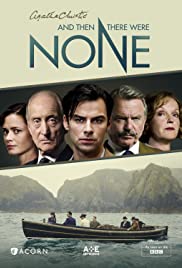
And Then There Were None (Craig Viveiros, 2015)
How Faithful Is It?
While it plays with the chronology and elaborates on some of the aspects of the narrative, this along with the Russian ‘87 version captured the bleak tone of the original novel better than any other version. It’s all there including the grim finale.
How Good Is It?
This may be the best version of the novel made so far, edging out the 1987 version on the strength of its overpowering atmosphere and its ability to capture the sheer desperation and hopelessness of the characters better than I think any other version of the story. The acting is across the board superb (with multiple Game of Thrones vets oddly enough). This one is strongly recommended.
Conclusion:
At the end of the day, as far as recommendations go, if you want the best and most faithful to the original novel, go with either the 1987 Russian version or the 2015 BBC mini-series. If you want some lighter fare that’s still nice to watch, go with the original 1945 version. The others are mostly just of interest to those who want to dig deeper into the different variations of a story of a bunch of shitty people getting killed one by one in an isolated scenario.

